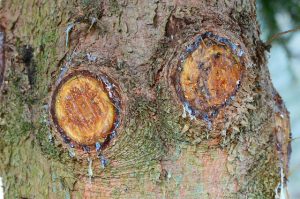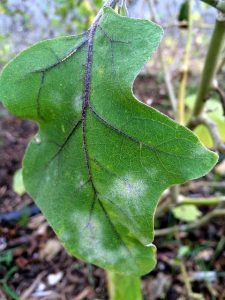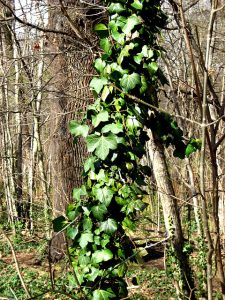Trees are incredibly sensitive, even though we often consider them to be signs of strength and perseverance. Like with humans, even just a little bit of stress can completely throw off trees of any size. You have to make sure you know to read your trees and make it so that they feel comfortable and safe in your yard – only then will you see how truly beautiful they can be.
Think your trees may be stressed? Sometimes, trees go through stages where they act a little strange and they are just moving into another phase. However, if your trees display any of these signs, you may want to get a professional to come take a look at them:
3. Your Trees Have Many Wounds
- More wounds popping up regularly
- Trees are discolored around the wounds
- New wounds take a long time to heal
Tree wounds are all a part of being a responsible tree owner – getting your trees trimmed will result in a wound that will eventually grow shut and leave a scar, much like happens to humans when we get a bad cut or have surgery. Wounds by themselves aren’t a problem. However, how the wound heals can be a sign of tree stress – or a sign that your tree is completely healthy.
Trees that are stressed are more likely to grow fungi, and wounds have the perfect formula for fungal growth – dark, moist, and closed in. After a storm or a trimming, if your trees are weakened, fungi may start to develop. You can easily spot fungi in the wounds of your trees by looking for dark discoloration or “fuzzy” growth in and around the wounds.
Make sure to check your tree regularly for any growths, starting with the lower wounds and newer wounds and then working your way up the tree, according to the University of Kentucky, to check stress levels. Sometimes, smaller wounds will heal just fine, but larger wounds won’t. For truly stressed trees, the wound may reopen from time to time.
Remember that fungi can grow on trees that aren’t stressed as well. However, fungi tends to prosper the most on trees that have already been stressed out.
2. You Spot Powdery Mildew Disease
- A powdery substance is along the root line of the trees
- Stems and leaves eventually get powdery spots as well
- The crown thins towards the top
Many of us believe that it is common to have powdery growths on trees. We attribute it to many things, from spiders making small, condensed webs to the trees themselves growing the mildew. In essence, the trees are growing it, but only because the mildew is feeding on the tree. Just like with the last option, many of the trees with Powdery Mildew Disease will have been stressed before getting it.
Mildew is a common sign of stress on catalpa, linden, chokeberry, and crabapple trees. Typically, the tree already has an infestation of some sort of pest on the lower part of the tree. As the tree is stressed from handling that, it makes for the perfect environment for the powdery substance to form.
Why did the pests stress out the tree? Pests steal from the nutrients and water of the tree, cutting off its source at the root. This is most common in the winter months and early spring when the ground is still solid. However, your trees may also experience high amounts of stress when it is extremely hot out – hot and humid or hot and dry. In both cases, the stress can lead to powdery mildew.
To prevent the disease in a tree that you already know has stress problems, Penn State suggests: “The spores are carried by air currents and germinate on the leaf surface. Liquid water on leaves inhibits spore germination.” Of course, talking to a tree care professional will also help you.
1. Ivy Is Stealing Nutrients From Your Trees
- Your ivy and your tree are competing for the same foods
- Tree won’t produce fruit at all
- Ivy growing at an increased rate
The biggest cause of stress for trees of any kind is ivy. If you want a tree that is happy, healthy, and free from stress, you may have to kick the ivy. While it is beautiful, ivy is a bigger threat to a tree than pests are when it comes to water and nutrients.
Per the Royal Horticultural Society, “If the branch canopy becomes thin and allows sufficient light to enter, the ivy will develop into its arboreal form. Fraxinus(ash) and Larix (larch), are both trees with a naturally thin, open crown so they may suffer heavy infestation. For this reason, ivy on ash and larch trees is often controlled.”
Removing ivy from your tree is a lot of hard work, but it will be worth it to take away the stress from competing for everything – rain water, ground water, nutrients, sunshine, airflow, and more.
At Econo Tree Service, our team is here for you if you feel like your trees are stressed out and you need to do something about it. Whether you have an older tree that is showing some strange signs or a tree that is new and isn’t adjusting well, we are here for you.
Our team of professionals works extremely hard to meet your expectations and go above them – we will work until we get you the answers to your questions, even if they aren’t as obvious. Trees take a lot of work and to know how to truly read them, you have to have years of experience. Thankfully, our team has a lot of experience working with trees of all kinds.
Still, even the best teams are more effective when they are given the appropriate time – so give us a call today at (650) 200-2495. We offer a free estimate where we can tell you if your trees are stressed and then proceed to make a suggestion on how to fix the problem.




